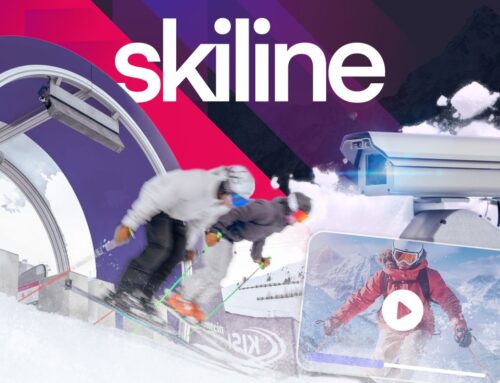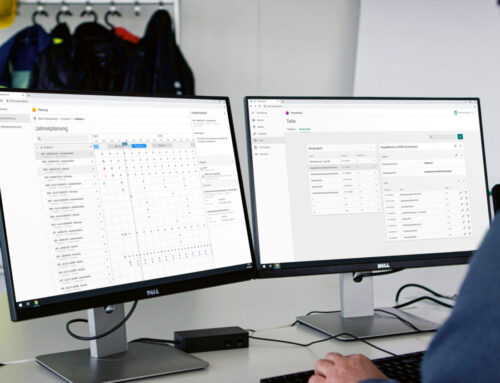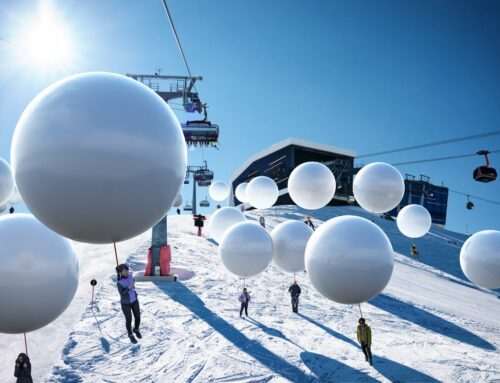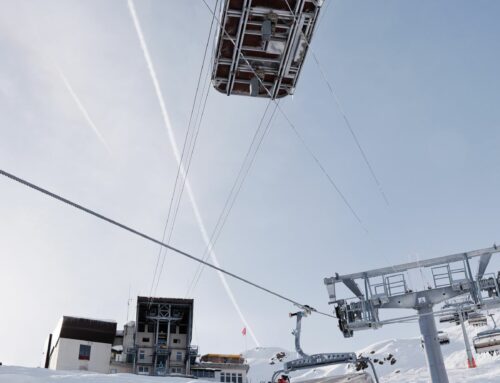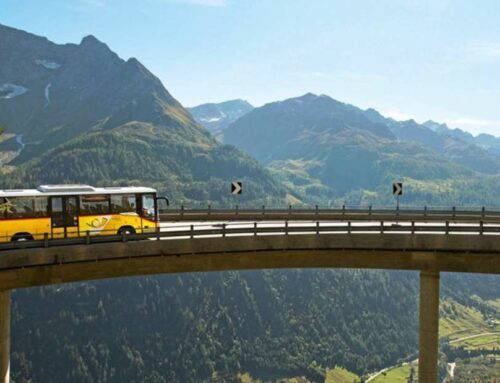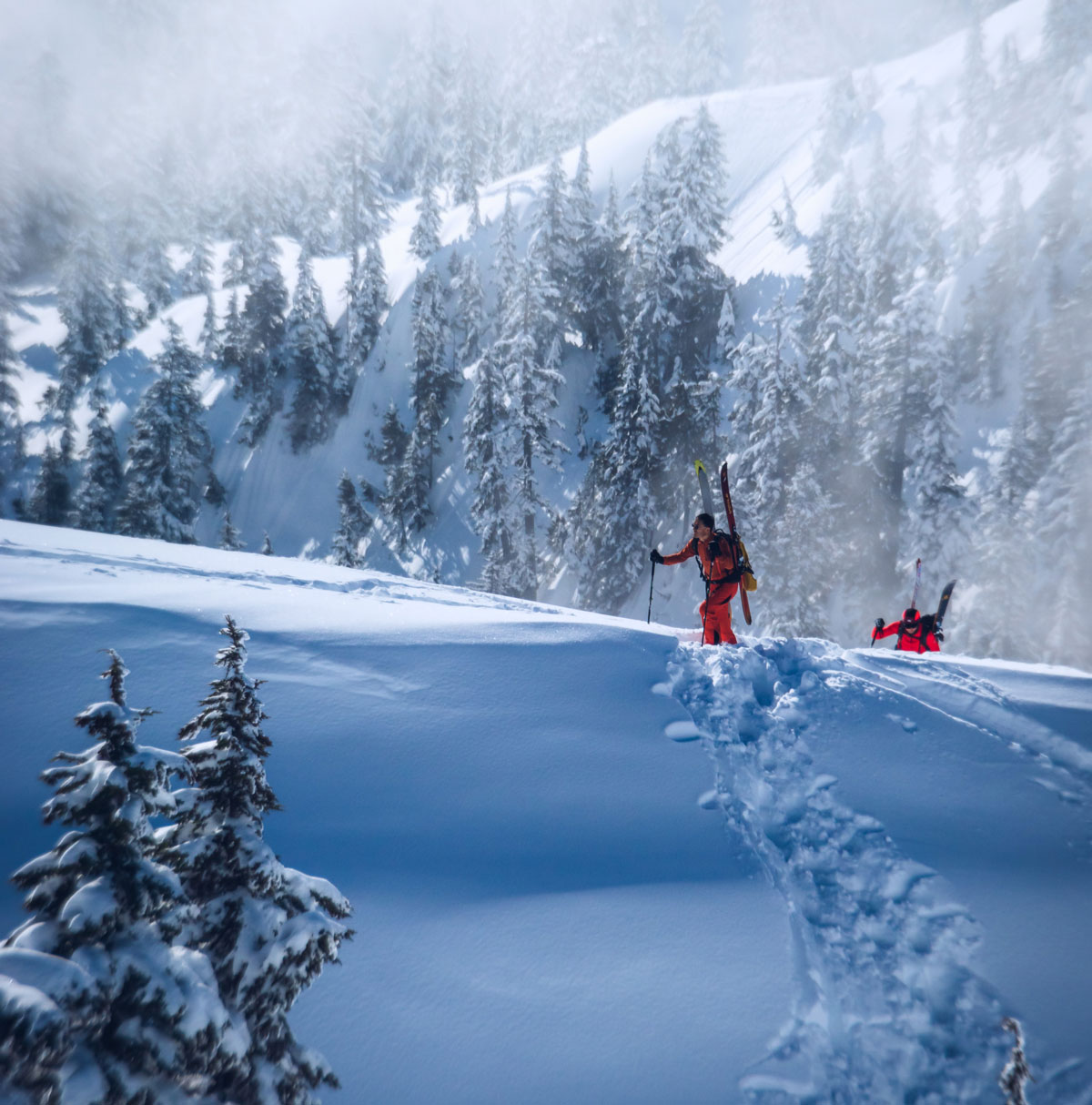
Digitalisation & Innovation, SI World 1/2023
Ski Touring: Respect for the mountain
Skiing tours are unique experiences of nature. They afford the opportunity to explore and discover the mountains. However, because of adverse snow cover formation, the risk is particularly high for ski touring this winter season and this is producing increasing numbers of accidents.
Yet its popularity is undiminished. Care and patience are therefore needed above all, as well as respect, to minimise the risks that touring entails.
Photo: Wolfgang Warmuth/Alpenverein
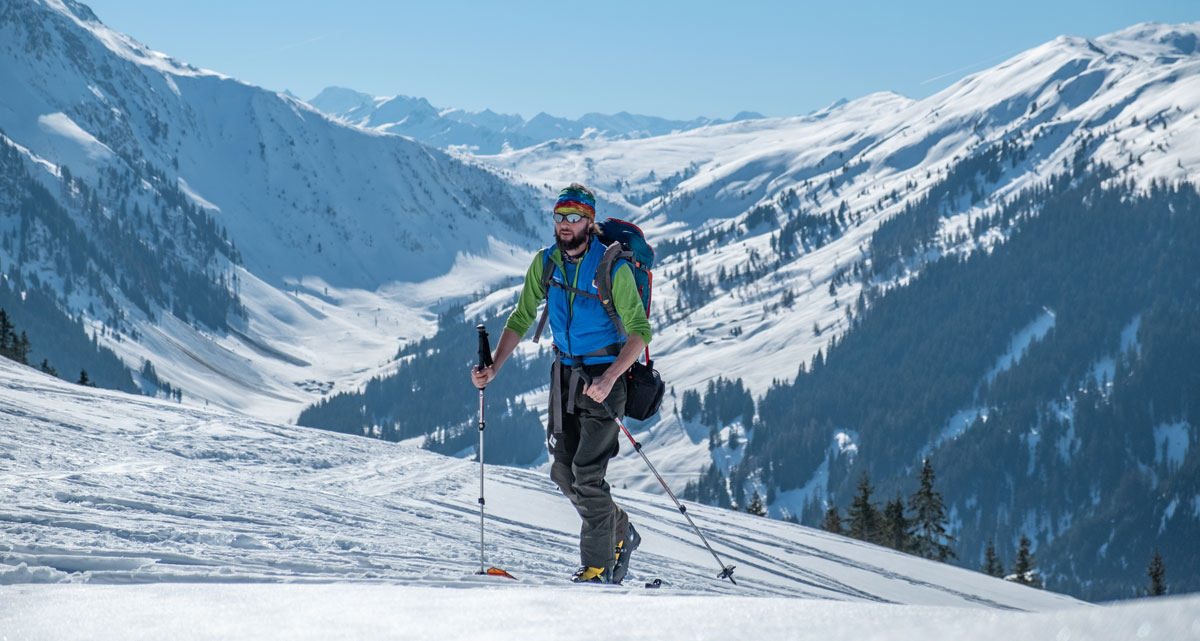
Consideration on the mountain
First and foremost, caution is advised when ski touring. A considerate approach to nature and wildlife is much more important here than when skiing on a marked piste. Healthy forests and intact ecosystems are very important not only as a habitat for wildlife but also for human life.
Quality of life is also partly dependent on nature, which serves a space for living and recreation. So, certain rules must be followed in the “living room” of the animals. These include mundane things, such as following the marked routes, but also not touring at dusk.
Safety on the mountain
Above all, the safety of tourers is the top priority. Ski touring is a nature sport, and it is associated with a high number of risks and therefore potential accidents. Appropriate equipment, a realistic self-assessment and prior information about current conditions are essential for a successful and hazard-free tour.
Independent and risk-aware action is required here to protect yourself from the dangers on open terrain. Careful planning is particularly important and that is best achieved if you use the following questions as a guide: How? What? Where?
QUESTIONS TO MINIMISE RISK:
- How dangerous is it today? How high is the risk level?
- What is the avalanche problem today? Is it wind-drifted or old snow?
- Where are the danger spots?
Ski touring
is increasingly gaining popularity, despite the prevailing risks. Photo: Unsplash
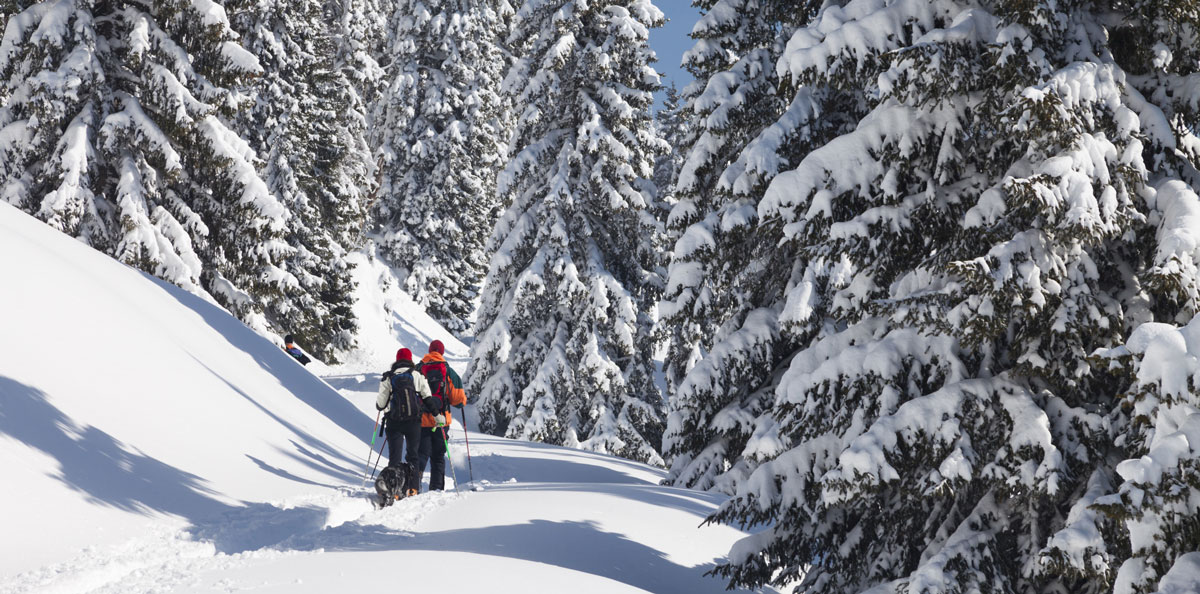
Digital assistance on the mountain
To be able to answer these questions and thereby improve safety when ski touring, digital platforms exist for outdoor tourism. On these, you can register for example as the operator of a ski resort, so that you can ensure the safety of the guests. For other tourism stakeholders too, the platforms additionally offer a direct connection between those involved and the individual guests.
These platforms have features that show important information about the avalanche situation, as well as current and future snow depths. These are updated daily and are therefore a helpful input, especially for ski tourers when planning tours.
The new function is also a significant gain for many organisations in the area of mountain sports. To know the dangers posed by the snow and to be able minimise the associated risk, it is essential to obtain information about the current situation.
Risk appetite on the mountain
After risk awareness, risk appetite is an important point. Willingness to take an existing risk is a problem for ski touring. It can often be traced to peer pressure and the pressure to succeed within a group, or to a “no risk, no fun” mentality.
You therefore need to admit your own doubts and uncertainty in some dangerous and risky situations. Self-reflection and caution are just as important as monitoring the terrain and the snow cover. This monitoring can be offered with the aid of digital platforms.
